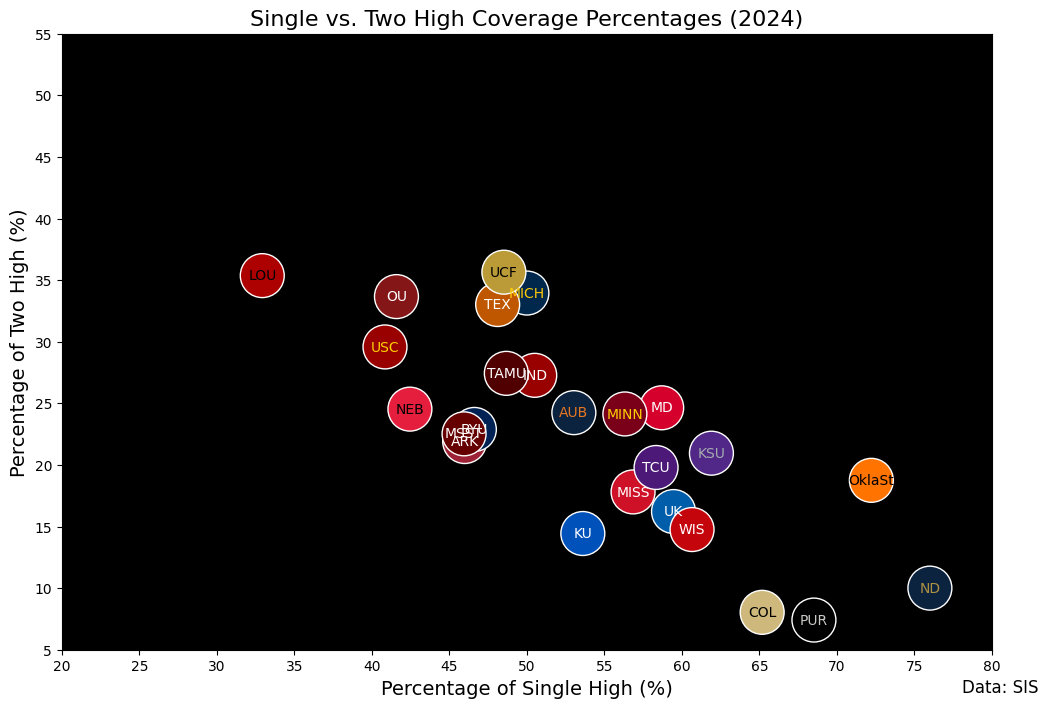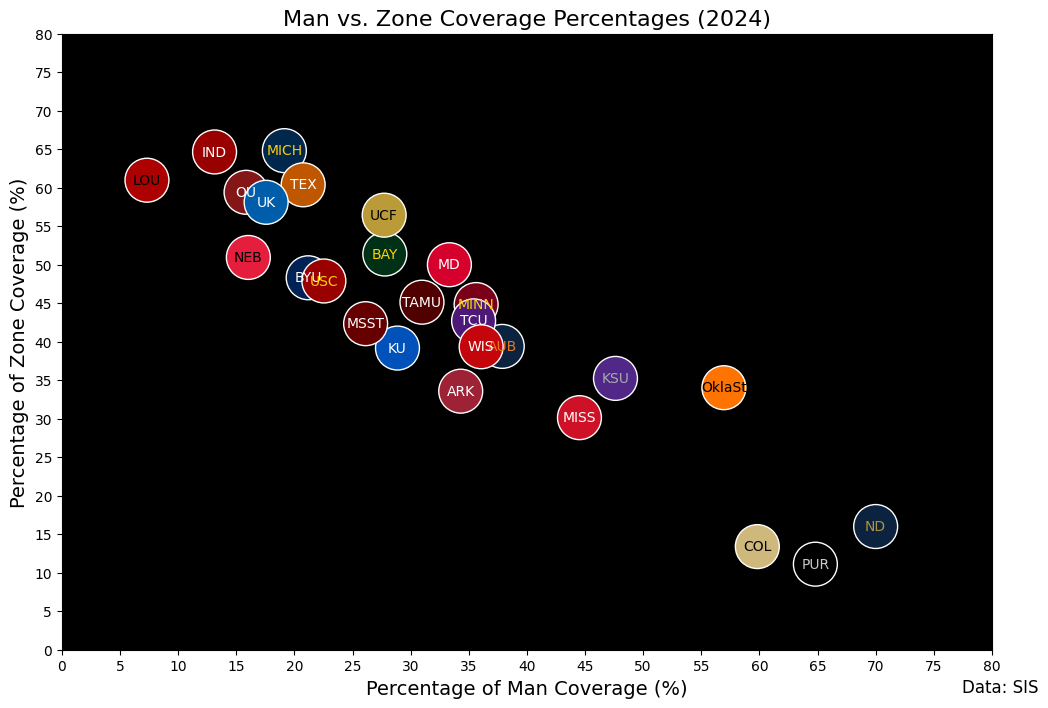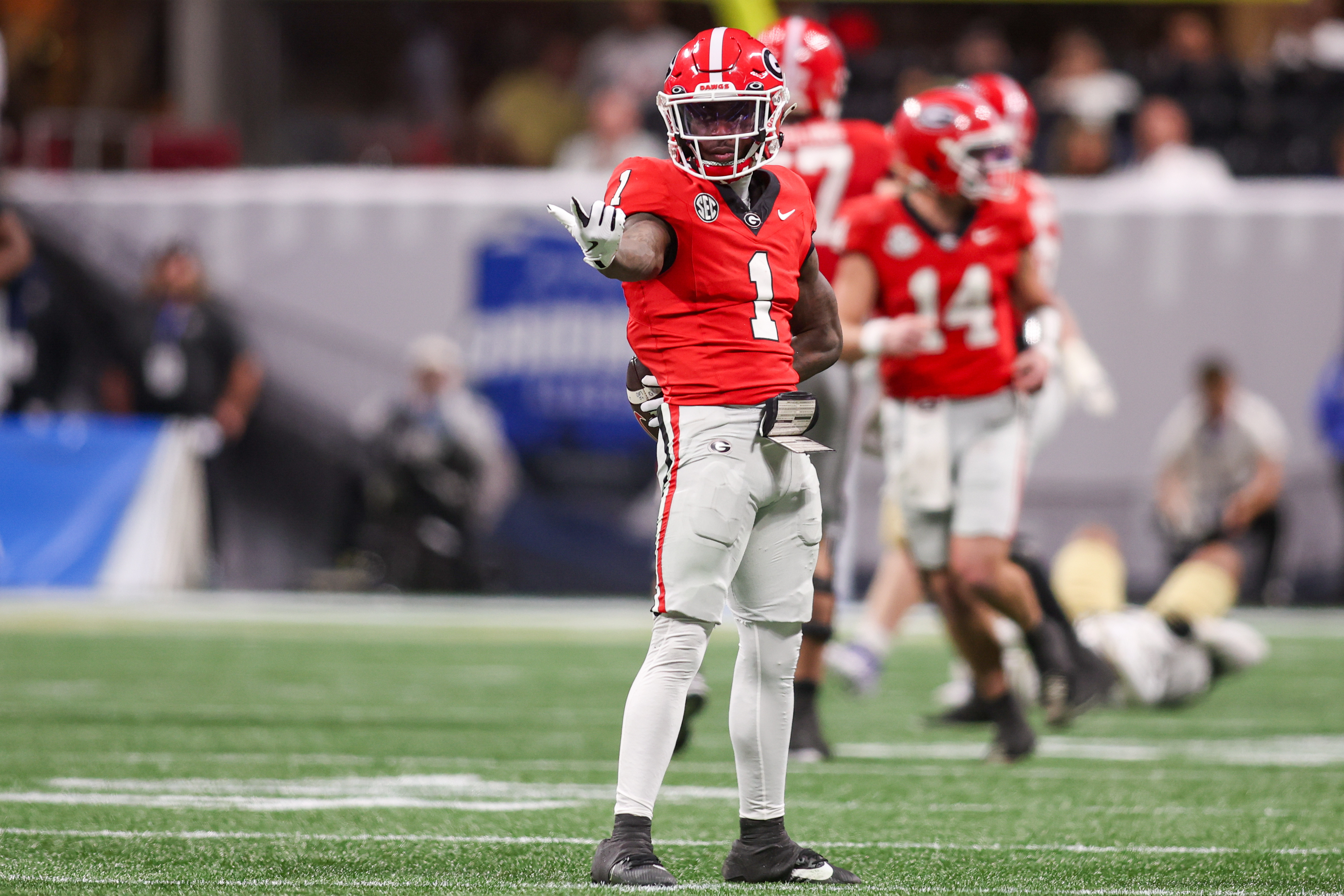CFB DFS DraftKings Main Slate Breakdown: Week 5

Using his experience as a former scout and staff member at Central Florida under Josh Heupel, Jordan Vanek takes an in-depth look at the upcoming CFB DFS main slate on DraftKings. Formerly of The 33rd Team and 4for4 Fantasy Football, Jordan will do a deep dive into the best stacks, running backs, and wide receivers before giving his overall thoughts on some slate strategy.
Week 4 of college football was a wild ride with some unexpected outcomes. I went all in on the Florida and Mississippi State game stack, and while they combined for 73 points, the production unfortunately didn’t land on my guys. However, this weekend offers a fresh opportunity for success, and I’m excited to dive into it. We’ve now gathered enough coverage data to showcase the insights I’ve been working on all offseason. This will be my most detailed article yet, and I can’t wait to share the strategies that will help us make more informed decisions moving forward.
Initially, I wasn’t too interested in the slate, but as the week has progressed, I’ve uncovered some great value that makes it worth considering. Plus, the 4:15 PM ET island game (MSST/UT), where Texas has an implied team total of 50 points, has me excited, especially with a unique stack that I’m targeting. Let’s dig in!
If you have any questions about my analysis or the slate overall, feel free to reach out in the RotoGrinders Discord.
Editor’s Note: Looking for more places to play? Check out our PrizePicks promo code and Underdog Fantasy promo code, two of the best DFS apps available today.
CFB DFS DraftKings Picks: Top Stacks, Running Backs, & Wide Receivers for Week 5
Now that we’re 4 weeks into the season, we can utilize coverage data from Sports Info Solutions to analyze the defensive schemes being played. Before diving into the data, there are a few important things to note. Screen passes are excluded from the data because, in my opinion, it’s difficult to determine the true coverage on those plays. As a result, the coverage percentages you see won’t add up to 100 percent.
With that in mind, let’s explore what these charts showcase and why this information is crucial for building stacks and understanding matchups. This will provide valuable insight into how well players can exploit these defensive schemes.
Single High vs. Two High

Single-high coverage refers to a defensive scheme where one safety hovers over the middle of the field. Teams that heavily utilize single-high coverage include Oklahoma State, Colorado, Purdue, and Notre Dame.
Two-high coverage, on the other hand, involves two safeties patrolling the middle of the field. Teams that frequently use two-high coverage are Louisville, Oklahoma, UCF, Texas, and Michigan.
Man vs. Zone

Man coverage refers to a defensive scheme where a defender is responsible for covering a specific player throughout the duration of the play. Teams that are currently utilizing man coverage at high rates are often the same teams playing a lot of single-high coverage, such as Purdue, Notre Dame, Colorado, and Oklahoma State. Additionally, Ole Miss and Kansas State are playing a significant amount of man coverage but are using cover 2 man, where two safeties stay deep to provide support over the top of the man coverage.
Zone coverage, on the other hand, involves defenders covering specific areas of the field. While defenders may end up in man-like situations when an offensive player enters their zone, their responsibilities vary based on the defensive call and play situation. Teams frequently using zone coverage include Louisville, Indiana, Michigan, Texas, Kentucky, and Oklahoma.
Stacking & Bring-backs
Miller Moss ($7,300, QB, USC)
Woody Marks ($7,100, RB, USC)
Zachariah Branch ($5,000, WR, USC)
Will Pauling ($4,800, WR, Wisconsin)

USC is looking to bounce back after their loss to Michigan, and this is a prime spot for them to do so in a big way. Wisconsin’s pass defense has shown weaknesses, allowing an average of 7.9 yards per pass attempt, which opens up a lot of potential for USC’s offense. Moss is one of the cheaper QB options on this slate, with significant upside. He’s capable of throwing for over 300 yards and multiple touchdowns, making him an excellent value play. Pairing him with the chalky Marks looks appealing, as Marks is an exceptional pass catcher who had 10 targets last weekend. Marks also provides dual-threat value, with opportunities both on the ground and in the screen game. Getting unique with this lineup could involve stacking Moss and Marks together.
On the WR side, Branch has clearly separated himself from the rest of USC’s receiving corps, and the data shows that he’s been the top target earner against single-high coverage. Since Wisconsin is one of the teams that runs single-high coverage at a high rate, this makes Branch an excellent option for exploiting their defense.

On the other side of the matchup, bringing it back with Pauling is worth considering, though it’s not something you need to force. Pauling is a high-volume target earner, offering a solid floor for this game, even with a backup QB. He narrowly missed a big touchdown last week, and the extra practice time with Braedyn Locke should improve their timing. In the game against Alabama, Pauling had a 34.6% target share with Locke under center, and his average target depth of 10.3 yards is an excellent figure for his skill set.
This content can help you make better CFB DFS picks
- To access this content, subscribe to CFB Premium or purchase a 3-day trial.
- A CFB subscription will allow you to access this content and much more!
About the Author
Jordan Vanek has been playing DFS since 2016. He attended the University of Central Florida, where he joined the football staff as a player personnel intern and participated in the recruitment of Dillon Gabriel and Ryan O’Keefe. Formerly of The 33rd Team and 4for4 Fantasy Football, Jordan joined the RotoGrinders team in 2024 and will be providing College Football and NFL DFS content for Premium subscribers. Follow Jordan on Twitter – @JordanVanekDFS
